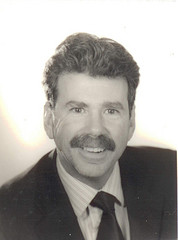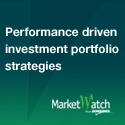Update: This post was included in the Wealth Builder Carnival and the Carnival of Financial Planning
As of November 21, 2010, spot gold had risen 18.48% over a 1 year period whereas the S&P/TSX Composite index had risen 11.89%. Over a 5 year period, the price of gold has risen 175.73% while the S&P/TSX Composite has risen 20.84%. Clearly the battle of returns between a broad index of Canadian equities and the yellow metal, be it over a 1 or 5 year period, has been won by gold . While many have argued that gold will continue to outperform going forward, there are equally as many who argue against an investment in gold , including the Oracle of Omaha. While there are valid points on either side of the argument it is you who has to judge on which side of the debate you fall. Having said that, if you happen to fall on the side that calls for an investment in gold , you’ll likely enjoy the following interview.
Today’s interview (which was conducted on October 17, 2010) is about a company called Kinross Gold (K:TSX). We are extremely excited to have portfolio manager Bruce Campbell of Campbell & Lee Investment Management make the bullish case for an investment in Kinross. Read on to find out why he and his clients own this gold miner.
Biography: Bruce Campbell is a widely respected professional money manager with over 35 years of experience in the investment industry. Bruce was a Senior Vice President with Royal Trust, a wholly-owned subsidiary of the Royal Bank, managing over ten billion dollars of Canadian and US equity money for pension plans and mutual funds. The team was acknowledged by independent measurement services as being one of the top investment performer in the country over a ten year period. In 2000, Bruce co-founded Campbell & Lee Investment Management Inc. where he currently provides investment services to a wide variety of high-net worth clients. Bruce has a B.A. and M.A. in Economics.
Q: Can you start off by telling us a little bit about Kinross Gold (K:TSX)?
A: Kinross engages in the acquisition, exploration, development and operation of gold properties in United States, Chile, Brazil and Russia. The company is a senior gold producer with over 50 million ounces in reserves and produces over 2.0 million ounces of gold per year. It’s main operating assets are Paracatu in Brazil and Kupol in Russia, and development assets include Lobo Marte in Chile and Fruta del Norte in Ecuador. Kinross’s recent acquisition of Redback Mining is company changing as the acquisition will double the company’s production by 2015.
Q: There have been a number of questions about Kinross’s recent acquisition of Redback Mining, from the price they paid for the acquisition to the extent and size of Redback’s discovery. What are your thoughts on the acquisition and how do you think it will impact Kinross in terms of earnings, growth and valuation in the future?
A: The takeover hit Kinross’s share price hard, it has been estimated that they paid approximately $900 per proven ounces of gold in the ground for Redback. Kinross seems confident, after examining the property and potential resources that were in the ground that there is much more yet to be proven. We think that the biggest challenge for Kinross will be expanding production at the African mines, proving that there is substantially more gold to be had there and dealing with infrastructure issues in the two new African mines. If successful, which we believe they will be, the company will double production before 2015. In the meantime however, with production just coming on stream and Kinross needing to lower costs in Africa, the impact to the share price has been relatively negative. This was expected, but we feel it has created a great buying opportunity for investors looking for value and growth.
Q: Can you describe Kinross’s competitive environment? How is the company positioned vis-a-vis its competitors?
A: Kinross has been a relatively low cost producer among the majors, (approximately $529/oz Q3/10, higher recently because of the Redback mines coming on stream). The cheapest in the industry is Goldcorp (G:TSX) at $336/oz and the most expensive is Iamgold (IMG:TSX) at over $600/oz. Kinross is well positioned to take advantage of strong gold prices because of their low costs, and as an investment it is good to know that they can handle weakness in bullion prices going forward. It should also be noted that Kinross is the only one of the major producers whose stock is down year-over-year, as a result of trading arbitrage associated with the Redback acquisition. We feel confident that this makes the stock even more attractive since it has underperformed the sector and bullion itself. Furthermore, its most recent results portend substantial upside, production was 575,065 oz of gold, up from 537,440 oz in Q3 2009, a 6.5% increase in production year over year. The two new African mines Tasiast and Chirano (acquired in the Redback acquisition) contributed over 20,000 oz of bullion to the bottom line, at average costs of $1098/oz and $970/oz respectively. There is plenty of room to lower costs in Africa, Kinross has provided the estimate range of about $505-$520/oz, which would cuts costs in half and contribute significantly to the bottom line. Ultimately we feel that growth and lower cost, is what will set Kinross apart from competitors. It will just take some time to materialize.
Q: How much weight are you assigning to Kinross’ management in your investment thesis? Have they performed upto your expectations till this point?
A: Weight of management is very important now to the stock price. Tye Burt is very credible and the management team has put on excellent presentations recently in Toronto which have eased the minds of institutional investors. They could have done a better job of informing the street of their intentions before the acquisition but I believe they were trying not to overpay for Redback.
Kinross has underperformed in the last 12-24 months relative to its peers, as well as bullion price, this is largely due to their acquisition. We have been buying on that weakness and plan on holding it until it is fully valued based on the assets it has and until its valuation catches up with current bullion prices.
Q: How much is Kinross a “sector pick” as opposed to a pure bottom-up pick?
A: We like gold right now (and have even prior to the good run it has had) so it is technically a sector pick. However, we like Kinross more as a bottom-up pick right now due to the impending growth and undervaluation compared to both its peers and the market in general. As it works out its acquisition and infrastructure issues with the Redback assets and continues to grow its current production we feel that the stock price will move as it reports substantial growth over the next several quarters and years.
Q: What about valuation? How does Kinross’s valuation compare to its peers?
A: At current bullion prices Kinross P/NAV is approximately 1.1, which is in the same range as its competitors (G, ABX, IMG) but given the growth prospects we believe Kinross stands out. It will show better production growth over the next 5 years than the peers.
Q: What catalysts do you see that could move Kinross’s stock price?
A: The biggest catalysts are:
- Africa and the continued “proving-up of resources” which should happen in 2011.
- Also, they will solve issues in African production and grow production consistently (multiple water leaks at Tasiast hurt production last quarter) but is being fixed. This should lower production costs which is also a key metric.
- Higher gold prices will help as the company is unhedged, large and liquid which should attract international institutional investors.
- The key longer-term metric is that the company achieves their goal of producing over 4 million ounces of production by 2015 and shows the path that will get them there.
Q: What are some of risks that could hamper your investing thesis in Kinross?
A: The risks include:
- Their recent move into Africa carries with it significant geopolitical risk although it is in a relatively less-risky country.
- Infrastructure issues in Africa do exist, mainly a pipeline of over 100km to the cost for water.
- If lower than expected proven resources are proved up as a result of the Redback acquisition making the $900 cost/oz for the acquisition seem very expensive.
- A dramatic drop in gold prices would hurt all companies in the sector.
Thank You, Mr. Campbell!










